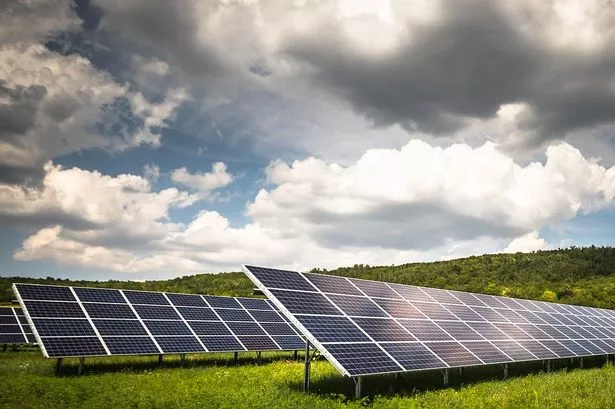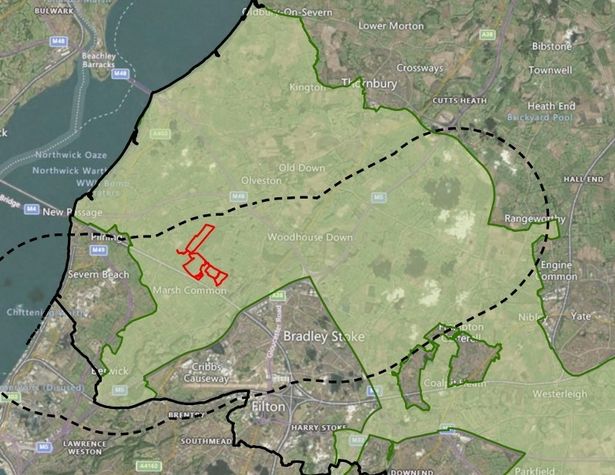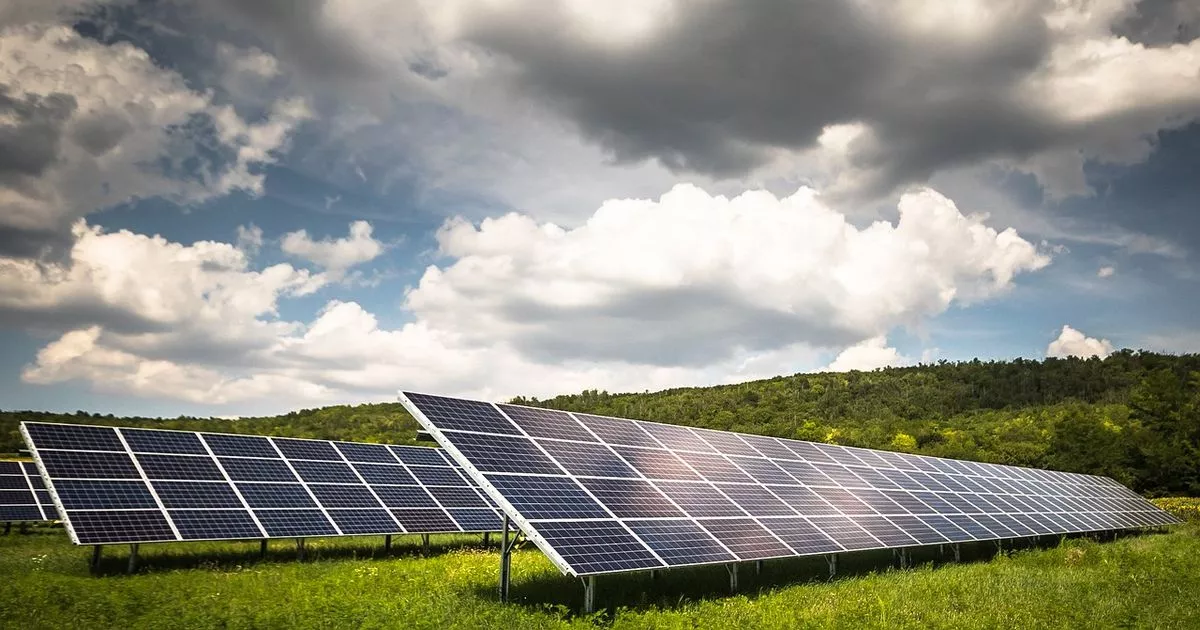A decision is due next week on granting permission Stock image of solar farm(Image: Zsuzsa Bóka/Pixabay)
Stock image of solar farm(Image: Zsuzsa Bóka/Pixabay)
A giant solar panel farm is planned north of Bristol which could soon power 18,000 homes a year. If the plans go ahead, much more renewable energy would be generated locally, helping the region reduce its contribution to the climate crisis.
Luminous Energy Ltd has applied to South Gloucestershire Council for planning permission to build the Cattybrook Solar Farm west of Almondsbury. But the plans have received some objections, including on the potential impact on people riding horses in country lanes nearby.
Councillors on the development management committee will vote on granting permission on Thursday, April 17. The solar farm would generate 49.9 megawatts of energy, enough to power around 18,000 homes a year. Planning officers are recommending they grant permission.
 Where the Almondsbury solar farm is planned(Image: Luminous Energy Ltd)
Where the Almondsbury solar farm is planned(Image: Luminous Energy Ltd)
A committee report said: “The proposed solar farm could be considered to be a reliable source of renewable energy which would positively contribute to reducing reliance on some less secure, non-renewable sources of energy.
“This is pertinent at the time of writing, where global influences and reliance on imported energy have resulted in increased costs.”
The solar farm would cover 83 hectares, split across 23 agricultural fields.
As well as the solar panels, the plans include access roads, cabling, a control room, a substation, storage containers, a battery compound, two-metre high security fencing and CCTV.
Two parish councils are objecting to the plans to generate renewable energy, because they say the solar farm will “blight views”.
There were also concerns that the small country lane to access the site is unsuitable for construction vehicles needed to build the solar farm.
Another concern that could scupper the plans to generate renewable energy is the potential impact on horses. Writing to the council, the British Horse Society said access to the site is over a public bridleway, which would “bring equestrians and construction vehicles into conflict”.
The UK is trying to increase the amount of renewable energy generated, including via solar farms and wind turbines, in order to reduce reliance on fossil fuels which cause climate change.
However, progress has not been made fast enough, leaving the country vulnerable to sudden increases in gas prices, while still emitting vast amounts of carbon dioxide.
Six years ago, the council declared a ‘climate emergency’. This led to a pledge to maximise how much renewable energy was generated in South Gloucestershire.
However, currently only five per cent of the district’s energy demand is locally generated by renewable sources.
In planning documents, the applicants said: “The proposed development would contribute towards energy security via the reliable supply of decentralised electrical energy and thus affordable bills for householders and business.
“There is a significant lack of electricity generation in the south west of England relative to demand.
“Most electricity is transmitted from the north of England and Scotland but transmitting electricity over long distances has financial and environmental costs as transmission losses must be offset by increased generation.
“A community benefit fund of £20,000 every year will be set up for local initiatives — for example to help those struggling with energy bills.”
